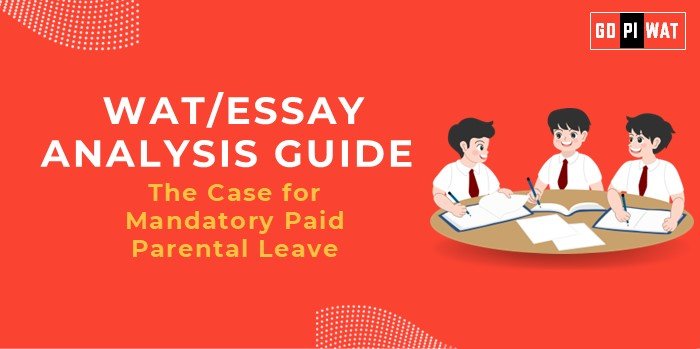🌍 The Case for Mandatory Paid Parental Leave
🌐 Understanding the Topic’s Importance
Paid parental leave is a pivotal workplace policy that directly influences gender equality, economic productivity, and employee welfare. Its integration into global corporate frameworks highlights a need for balancing financial feasibility with societal responsibilities.
📝 Effective Planning and Writing
- ⏳ Time Allocation:
- Planning: 5 minutes
- Writing: 20 minutes
- Review: 5 minutes
💡 Introduction Techniques for Essays
- 🔄 Contrast Approach: “While countries like Sweden provide over a year of paid parental leave, many developing nations lack even the most basic frameworks, raising concerns about workforce inequality and productivity.”
- 🔧 Solution-Based Approach: “Mandatory paid parental leave can revolutionize workplaces by balancing family responsibilities with career growth, provided policies address financial sustainability for companies.”
📖 Structuring the Essay Body
✔️ Achievements
Studies reveal that parental leave promotes workforce retention, as 80% of employees return post-leave. Additionally, countries like Sweden showcase the economic benefits of shared caregiving roles, reducing gender disparities in the workforce.
⚠️ Challenges with Comparative Analysis
Small businesses often face financial strains in implementing paid parental leave, unlike large corporations or economies where governments subsidize such policies (e.g., Germany). This disparity highlights the need for scalable and context-specific solutions.
🔮 Future Outlook
Introducing cost-sharing mechanisms between governments and businesses can create equitable parental leave frameworks. Encouraging gender-neutral caregiving environments ensures a balanced and inclusive workforce, essential for modern economies.
📌 Concluding Effectively
- ⚖️ Balanced Conclusion: “While implementing mandatory paid parental leave poses financial challenges, its societal and economic benefits underscore its necessity for a sustainable workforce.”
- 🌏 Global Comparison Conclusion: “By learning from global successes like Sweden and addressing unique domestic challenges, companies can design equitable paid parental leave systems.”
📊 Recommendations for Sustainable Progress
- 📖 Government Subsidies: Assist SMEs to implement paid parental leave without economic burdens.
- 👨👩👧 Shared Responsibilities: Encourage both parental roles to utilize leave policies equally.
📝 Sample Short Essays
✔️ Balanced Perspective
“Mandatory paid parental leave balances employee welfare and organizational productivity. While critics argue financial stress, successful global models like Sweden prove that shared responsibility frameworks can ensure equity without compromising business interests.”
🔧 Solution-Oriented Approach
“Paid parental leave enhances workforce stability and gender inclusivity. Governments can support employers by subsidizing costs, creating a win-win situation for businesses and families.”
🌍 Global Comparison
“Parental leave policies vary globally, with Sweden leading the way. India can bridge its gaps through co-funded models, ensuring inclusive and sustainable workforce growth.”


